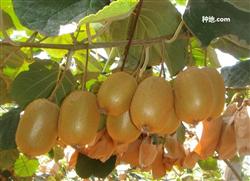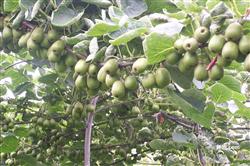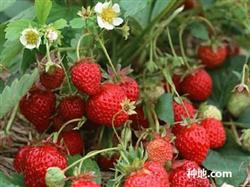How to fertilize kiwifruit scientifically

How to fertilize kiwifruit scientifically? Please guide kiwifruit to adapt to warm and humid slightly acidic soil, most afraid of heavy viscosity, strong acid or alkaline, poor drainage, excessive drought, barren soil. Therefore, measures of improving soil fertility can be taken to improve soil physical and chemical properties and create the optimal ecological environment for its growth. Nitrogen nutrition and fertilization: the distribution of nitrogen in root, stem, leaf, fruit, cortex and xylem of kiwifruit was as follows: root, leaf, fruit > stem; cortex > xylem; the storage site of nitrogen in winter was the cortex of root and stem, and it was mainly stored in the cortex of stem. In the kiwifruit orchard with yield of 2000kg/ mu, the total nitrogen uptake of kiwifruit trees in the annual cycle was 14.45kg/ mu, and the total 2.25kg/ mu was absorbed after entering the fruit harvest period and before fruiting, and 12.2kg/ mu was absorbed during the whole fruit growing period, accounting for 15.57% and 84.43% of the total nitrogen uptake, respectively. The amount of nitrogen absorbed in the two stages from May 18 to July 9 and from July 9 to September 8 accounted for 53.13% and 31.30% of the total nitrogen absorption, respectively. Nitrogen deficiency often occurs in orchards with extensive management. Therefore, it is very important to apply sufficient nitrogen fertilizer in combination with planting points. Phosphorus nutrition and fertilization: the distribution of phosphorus in root, stem, leaf, fruit, cortex and xylem of kiwifruit was as follows: root, leaf, fruit > stem, cortex of root and stem > xylem. From the budding stage (March 28) to the initial period of fruit growth (May 18), 78.89% of the phosphorus needed for kiwifruit leaf growth came from external absorption, 4.44% from the previous year's stored phosphorus in the root, and 16.67% from the previous year's stored phosphorus in the stem. From the initial period of fruit growth (May 18) to the end of fruit rapid expansion (July 9), the phosphorus uptake of rhesus monkey trees is 55.40% of the total phosphorus uptake in the whole year, which is the maximum efficiency period of phosphorus nutrition. The total amount of phosphorus absorbed by kiwifruit trees in the annual cycle is 2.64kg/ mu (kiwifruit yield 2600kg/ mu). According to the formula of reasonable fertilizer application amount of fruit trees = (fertilizer absorption-soil natural fertilizer supply) / fertilizer utilization rate (%), annual application of pure phosphorus 6.16kg/ mu is recommended. After entering the fruit harvest period (September 8) and before fruit (May 18), a total of 0.73kg/ mu was absorbed, and 1.74kg/ mu was absorbed during the whole fruit growing period, accounting for 29.55% and 70.45% of the total absorption, respectively. Click to get more kiwifruit planting techniques click to get more fruit planting techniques
- Prev

How can kiwifruit be planted with high yield?
How can kiwifruit be planted with high yield? Please guide kiwifruit to have high yield with reference to the following planting techniques: first, varieties should be selected with large fruit shape, good quality, strong disease resistance and good yield, such as Hayward, Allison, Bruno and so on. Second, choose to build the garden kiwifruit like a cool and humid environment, afraid.
- Next

What should I pay attention to when growing strawberries?
What should I pay attention to when growing strawberries? Please guide to plant strawberries to pay attention to the following points: 1. Select strong seedlings and disease-free seedlings with strong growth and many fibrous roots. Generally speaking, the seedlings should have at least 4 leaves and the stem is about 1 cm thick. If you buy seedlings from far away, the big leaves on the periphery of the plant should be cut off during cultivation, leaving only.
Related
- Moge, come on! The staff of the peasant association in the producing area of cantaloupe were frightened when the crowd gathered.
- Causes and Solutions of low Fruit setting rate of Apple
- Symptoms and control measures of passion fruit virus disease
- Fruit growing lesson: how do apple orchards keep high yields?
- Can you build orchards in the mountains? What are the pros and cons?
- How to manage the coloring period of Crisson grape?
- This paper introduces the processing technology of two kinds of fig products.
- How much is a month for retired teachers in rural areas by 2020?
- How can strawberry planting increase sugar content? We should pay attention to management in many aspects.
- What are the cultivation techniques on how to improve the yield of golden fruit?

